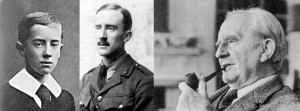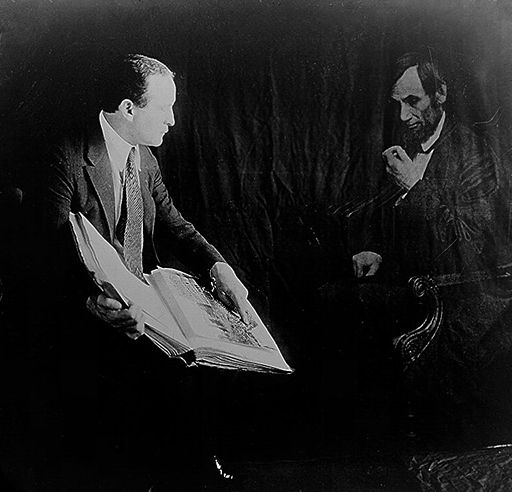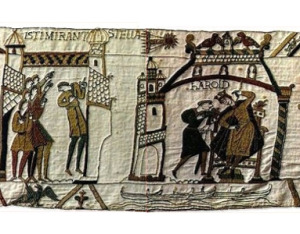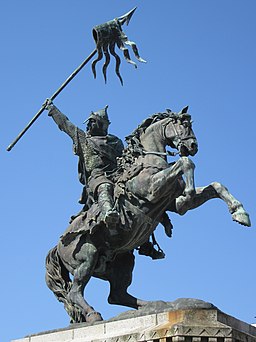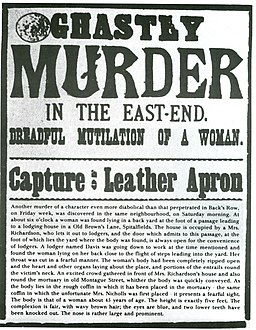Were you born on January 5? If so, then you share your birthday with Maria Constanze Weber, who, in 1782 became the wife of some fella named Mozart.
Constanze was only 15 years old when Wolfgang Amadeus Mozart, accompanied by his mother, made her acquaintance in 1777 in Mannheim. She was, however, not the focus of his attention; rather, Mozart, fresh from a recent tryst with his cousin in Augsburg, was suddenly smitten by her older sister, Aloysia. Mozart and his mother stayed with the Weber family until the spring of 1778 when he moved on to Paris in search of work with his mother in tow.
Constanze would not see Mozart again until 1781 after he was released by the court of Count Colloredo, Prince-Archbishop of Salzburg. (In actuality, he was quite literally booted in the ass as he left by the Count’s deputy, Arco, after going on an acerbic and ill-advised tirade of complaints and uncomplimentary observations.) By this time, Aloysia was married and Mozart had no real interest in rekindling the romance. Instead, he his gaze was captured by the attractive, 19 year-old Constanze.

Mozart’s father, Leopold, was not a fan of the Webers, in part because they were not of the same social station. This disapproving attitude gave him license to complain about Constanze to Mozart. Mozart was cowed by Leopold’s opinion of Constanze and made an effort to downplay any relationship that he might be having with her.
Mozart also tried to keep the relationship secret from her family as well. Naturally, courting shenanigans are difficult to keep under wraps, and Constanze’s mother got wise to the affair and asked Mozart to leave, whereupon he moved into an apartment in downtown Vienna on a street called Graben. (Graben, or ditch in German, got its name from the trench that lay in that area during its time as a walled Roman settlement called Vindobona.) All this time, Leopold was making much hay about the Mozart-Constanze affair, and all the while Mozart kept his cool and continued to downplay the relationship. In a letter, he wrote to his father,
“She’s only pretty in that she has two small black eyes and a good figure.”
Leopold was neither fooled, nor amused, and eventually Mozart opened the floodgates and simply told him that he was going to marry Constance in a way that was sure to return to Leopold all the frustrations that Leopold has heaped onto him over the years:
“I’ve decided to, first, make sure I’ve got some money coming in — it’s not too hard to survive here with the odd Godsend — and then, to get married… But who’s the girl I love? Well, don’t blow your top. ‘Surely not one of the Webers?’ Yes, actually, one of the Webers. Not Josepha, not Sophie… Constanze!”
Constanze married Johannes Chrysostomus Wolfgangus Theophilus Mozart on August 4, 1782, in St. Stephen’s Cathedral in downtown Vienna only a few blocks from Graben.

By this time her husband’s career was really beginning to take off, and his recent opera, Abduction from the Seraglio, was packing opera houses and garnering the enthusiastic praise of Emperor Joseph II himself. Constanze used her fine business sense to manage the house.
On June 17, 1783, Constanze gave birth to her first son, Raimund Leopold Mozart. She and Mozart left the baby in care and traveled to Salzburg to visit Leopold; however, they received word soon afterward that young Raimund had died. On the journey back, they stopped in Linz, where Mozart, seeing an opportunity, wrote the entire Symphony No. 36 in C in just a few days, and it was performed on November 4, 1783.
Constanze’s second child, Karl Thomas Mozart, survived into adulthood and was quite a good pianist himself. He never became a composer, but he did get into trading and helmed a failed business venture. Nevertheless, he made enough from royalties on other things to buy a place in the country, which he bequeathed to the village of Caversaccio in Italy after his death in 1858.
Her third and fourth child survived one month (Oct – Nov 1786) and six months (Dec 1787 – Jun 1788), respectively, and her fifth child was born and died on the same day in 1789.
Her sixth and final child, Franz Xaver Wolfgang Mozart (but called Wolfgang), followed in his father’s footsteps, becoming a composer and conductor himself. He did not, however, achieve the same acclaim as his father, although he was able to compose no fewer than 30 pieces of music in his own right. Mozart would never see any of his success, though, because he died on December 5, 1791, only two months after young Wolfgang’s birth.

Young Wolfgang died in 1844, and was survived only by his older brother, Karl. Karl, in turn, died in 1858. Neither Wolfgang nor Karl ever married or fathered children, so, as a result, with the death of Karl Mozart followed the death of the direct line of Mozart.
Constanze, again using her fine business acumen, parlayed the enormously popular musical legacy of her husband in a reversal of the crippling debts he left. She had a small career in music, and was even featured in her husband’s performances—even premieres—as a singer. After Mozart’s death, she continued singing, performing with her sister, Aloysia, in 1795.
She married again in 1809 to Georg Nissen, a diplomat from Copenhagen. She and Georg lived in Copenhagen until 1820, and then moved to Salzburg where they both penned biographies of Constanze’s late husband. Georg died in 1826, his tombstone reading, in part, “The husband of Mozart’s widow”. Constanze lived out her remaining years in Salzburg with Aloysia (who died in 1839), and Sophie. Constanze died on March 6, 1842, just two years before her son, Karl. Sophie died four years later in 1846.
Resources
Count Hieronymus von Colloredo, Wikipedia
Constanze Mozart, Wikipedia
Aloysia Weber, Wikipedia
Sophie Weber, Wikipedia
Georg Nikolaus von Nissen, Wikipedia
Franz Xaver Wolfgang Mozart, Wikipedia
Karl Thomas Mozart, Wikipedia
Mozart and His Times, Google Books
Wolfgang Amadeus Mozart, Wikipedia
Wolfgang Amadeus Mozart, MusOpen
Symphony no. 36 in C ‘Linz’, K. 425, MusOpen
Works, 1781 – 1785, The Mozart Project
Graben, Vienna, Wikipedia
Vindobona, Wikipedia
Mozart’s biography: tragedy strikes (1774 – 1778), Classic FM
Mozart’s biography: duels and his first son (1779 – 1783), Classic FM
Mozart and Constanze Weber – how Mozart met his wife, Classic FM
Maria Anna Mozart, Nannerl.net
Elizabeth Berridge (Media Gallery), Amadeus Live

